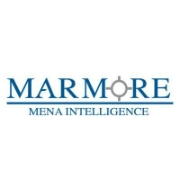Healthcare in Saudi Arabia - Will the future tide move towards private sector?

Marmore Team
11 April 2017
Saudi Arabia has one of the fastest growing populations in the GCC region, indicating a spiraling future demand for healthcare facilities. Despite huge government spending in healthcare facilities and growth of the sector in the past, health care infrastructure in Saudi Arabia needs to be elevated to match international standards. Apart from the constraints on government expenditure in the current scenario of lower oil prices, healthcare market also needs to overcome challenges such as dependency on imports for medicines and medical equipment, domination of expatriates in the workforce and business environment that is not conducive for the growth of private sector.
According to Marmore’s report on Saudi Healthcare, the market share of Saudi Arabia in healthcare sector would be the highest in the GCC region with 54.4% amounting to USD 26bn. Wide range of reforms and measures might be required to cater to the market.
Firstly, private participation in healthcare services can help to bridge the service gap. Public Private Partnership (PPP) projects are expected to be the show starter for improving private participation in various sectors in the Kingdom; healthcare sector would be no different. Saudi Arabian government has planned to establish a unit under the Ministry of Economy that would plan and facilitate ‘Public Private Partnerships’ for execution of the stalled infrastructure projects.
One such PPP project is the Saudi Trans Sadara Company and China International Development and Investment Corporation Limited (CIDIC) joint venture to build hospitals in Dammam, Jubail, Riyadh, and Jizan, at a total project cost of USD 350mn. These hospitals are expected to be fully operational by the end of 2017 and is expected to generate over 2,000 jobs for young Saudi nationals in the fields of nursing, procurement, marketing, administrative affairs, pharmacy, and safety & security.
Secondly, proper regulations and legal framework must be established while introducing Public Private Partnership (PPP) projects in the health care segment to reduce undue competition and increase in costs of services. Private participation can also be channelled in the area of IT-enabled healthcare services in the country. Another concern about the healthcare industry in Saudi Arabia is its fragmented nature. Fragmentation, in terms of service providers, pharmaceuticals and insurance providers paves way for consolidation, both within the business segment and across verticals.
With the future demand almost certain to grow, and the government’s vision to increase private participation by 2030, healthcare could be one of the most sought after industry. Starting from increasing PPP projects and consolidation through mergers and acquisitions, it is quite possible that the healthcare market could witness a sea of change in the coming years. The current situation presents a need as well as an opportunity for the development of private healthcare in Saudi Arabia. Ensuring smooth transition and functioning lies with the policy makers.
Stay Tuned To Marmore MENA Insights!
Never miss a patch or an update with Marmore's Newsletter. Subscribe now!
Related Article
The uptick in MENA Eurobond issuances – A sign of things to come?
MENA debt issuances have touched record highs in Q1 2025. Will the uptick continue in subsequent quarters?
Read MoreKuwait’s Approval of Public Debt Law: Re-emerging on Investors’ Radar
Kuwait has passed the long-awaited debt law in March 2025. The blog explores the importance of the law, the expected benefits and outlook for the countrys return to debt markets.
Read MoreThe Dynamic Rise of Fintech in the GCC
The convergence of technology and finance is reshaping the GCC Financial Ecosystem. The blog explores key players, regulatory framework and market dynamics of Fintech in the GCC region.
Read More



